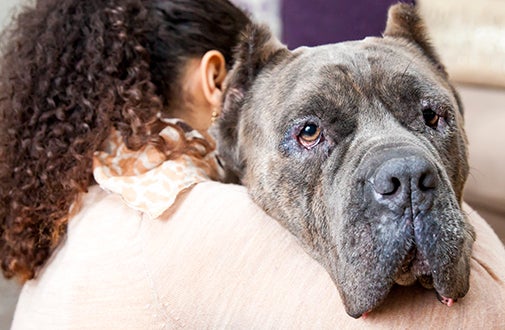One city in Washington state — Wapato — specifically bans all
types. That includes the
, Old English mastiff, American mastiff, Neapolitan mastiff, dogue de Bordeaux (or French mastiff), bull mastiff, Tibetan mastiff, Spanish mastiff, Pyrenean mastiff and Fila Brasileiro (or Brazilian mastiff).
Are any dog breeds banned in the US? With the nation’s focus on animal welfare, it’s no surprise that the answer is yes. Certain breeds of dogs are prohibited in certain states across the US, with some cities and housing facilities even going so far as to ban specific breeds all together. This is done to protect both the public and the dog themselves, as certain breeds have been known to cause harm due to their aggressive nature, or even due to their size. However, banning certain breeds doesn’t necessarily solve the problem, as it’s not the breed that causes the aggression, but usually something else such as improper training or mistreatment. Therefore, it’s essential that we look at the facts before we make a judgment on any particular breed. In this blog post, we’ll be discussing the various breeds that are banned in the US and why. We’ll also be looking at possible alternatives to banning certain breeds in order to better protect both animals and people, as well as the implications
Who Is Impacted by Breed-Specific Laws?
Regulated breeds, such as American Pit Bull Terriers, American Staffordshire Terriers, Staffordshire Bull Terriers, and English Bull Terriers, are the majority of the “pit bull” class of dogs. American Bulldogs, Rottweilers, Mastiffs, Dalmatians, Chow Chows, German Shepherds, Doberman Pinschers, or any combination of these breeds—as well as dogs that just superficially resemble these breeds—are also included in some areas as regulated breeds.
Legislation that identifies, tracks, and regulates dangerous dogs individually—regardless of breed—and forbids BSL is supported by many states, including New York, Texas, and Illinois. However, more than 700 U. S. cities have enacted breed-specific laws.
There is no proof that breed-specific laws make neighborhoods safer for residents or their pets. The Centers for Disease Control and Prevention (CDC) made the decision to vehemently oppose BSL after conducting a thorough investigation into human fatalities brought on by dog bites. The CDC listed several issues, including the unreliable data on dog bites and the difficulty in distinguishing between dog breeds (especially true of mixed-breed dogs). Breed-specific laws are also costly and difficult to enforce.


Then there’s the moral issue. Is it appropriate to show prejudice toward those who want a dog, possibly for protection, or, to go even further, as animal advocates do, is it appropriate to discriminate against one type of dog over another?
You probably wouldn’t be aware that you have a “dangerous” dog until after you’ve responded to the question and learned the outcome because these dog breed lists are concealed in filings with state insurance departments. Not all insurance companies have lists of prohibited breeds; some handle each situation individually and only cause problems for homeowners when the dog has a history of biting.
Total dog-related injury claims in the U. S. amounted to $854 million last year, with Nebraska’s average cost of a claim being the highest at $71,000. Injuries caused by dogs other than bites are also included in the total, such as children being thrown from bicycles or elderly people tripping over dog leashes.
It’s not a conversation starter. Many home insurance companies submit lists of prohibited dog breeds to state insurance departments that are real, official lists. You might not receive coverage if you own one of these dogs.
Related Stories
Dog Breeds Most Often Banned By Home Insurance Companies
Pit bulls are typically Bull Terriers, Staffordshire Bull Terriers, American Bull Terriers, and American Staffordshire Terriers, or any combination of these breeds, as defined by insurance companies.
Compare 10+ Leading Pet Insurers In Minutes
FAQ
Which dog breed is banned in USA?
One thing is certain: Pit bulls, the most frequently prohibited dog breed, are severely impacted by state and local laws as well as home insurance policies.
How many dog breeds are banned in the US?
Breed Specific Legislation (BSL) affects everyone. There are currently 75 prohibited or restricted breeds in the United States, according to the group Responsible Dog Owners of the Western States. It is also surprising to see which dog breeds are prohibited or restricted globally.
What are the 4 banned dog breeds?
…
These are the:
- Pit Bull Terrier.
- Japanese Tosa.
- Dogo Argentino.
- Fila Brasileiro.
Is Cane Corso a restricted breed?
The following is a list of the breeds that are most frequently prohibited: Pit bull terriers. Cane corsos.
